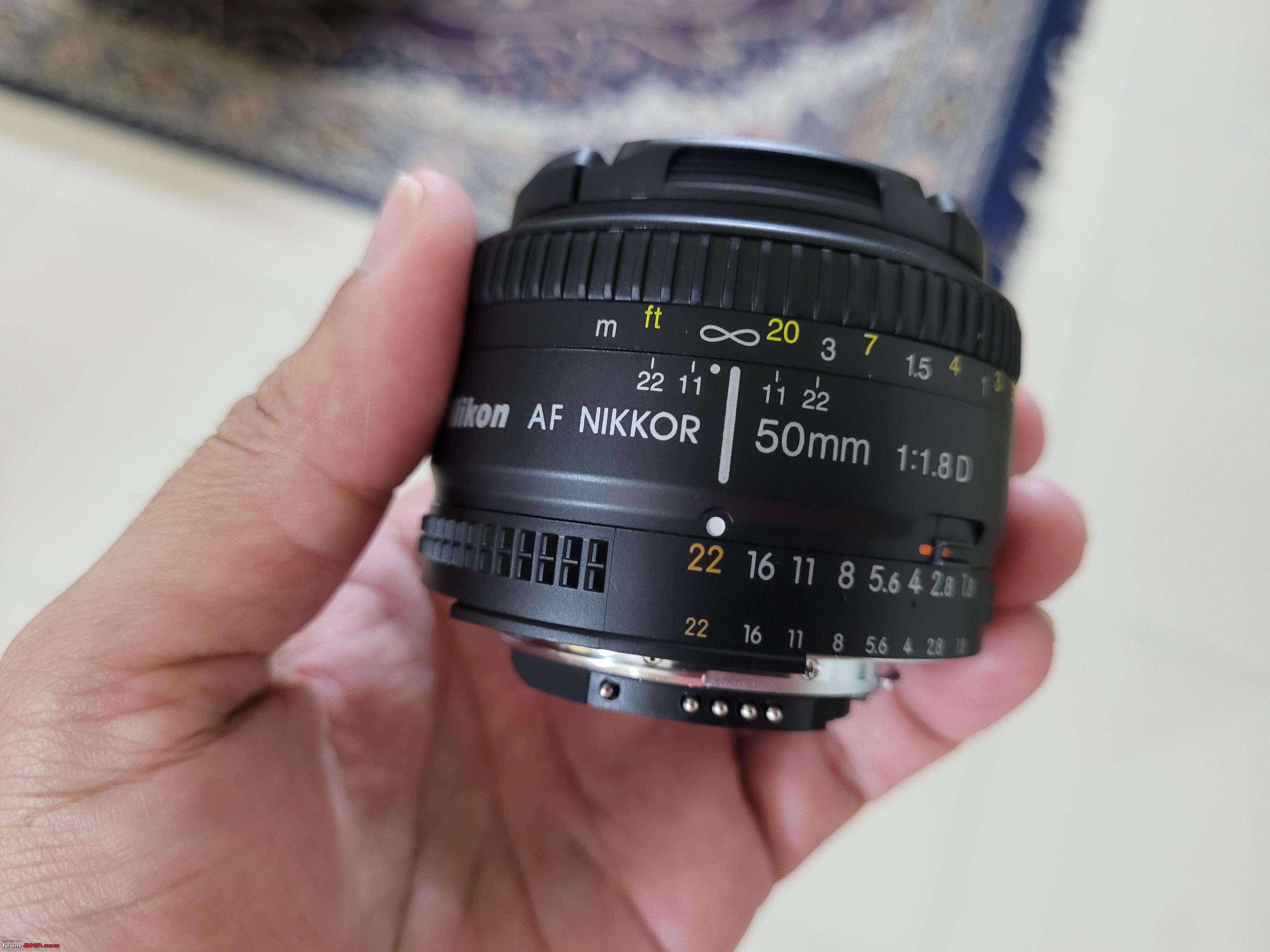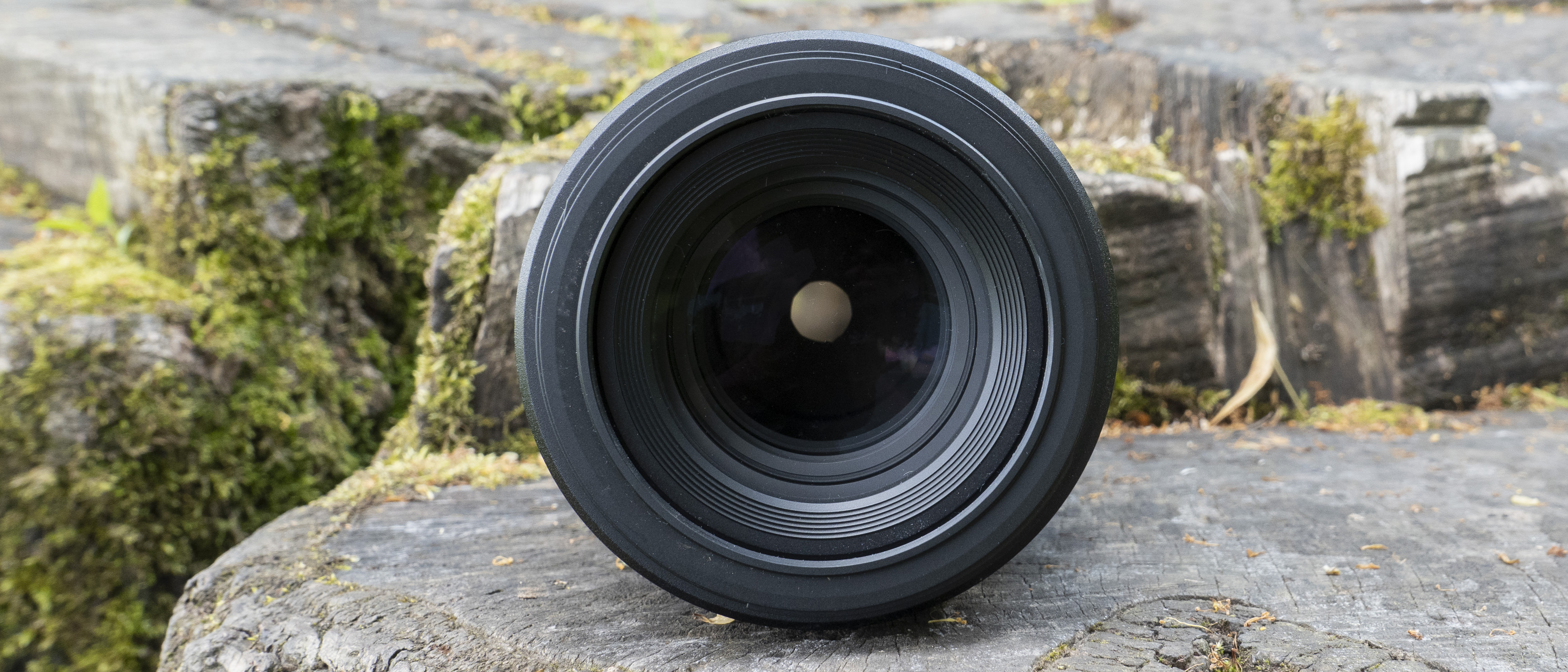Nikon 50mm lenses to take detailed portraits even in poor light.
Professional photographers want to have the best Nikon 50mm lenses to be ready for different shooting scenarios. Also known as “standard” lenses” or “nifty fifties”, these accessories give the equivalent field of view to normal human vision, which makes them a perfect option for taking lifelike images. The cost ranges from $100 to $700, so everyone can find a suitable option.
You can find both budget options with surprisingly excellent quality and expensive premium models among these Nikon lenses.
Obviously, the higher the price, the better features you get. The maximum aperture of affordable lenses tops at f/1.8, which is still pretty good and suitable for shooting in dim spaces. Besides, such accessories have a simple optical system, meaning they have a compact design.

Aperture: f/1.8 | Minimum focus distance: 1.48 ft | Angle of view: 47° | Autofocus: yes | Weight: 6.5 ounces
This is a standard compact lens that is considered one of the best lenses for the Nikon d5600. It is great for outdoor photographers who want to take good images in different weather conditions. The fast aperture of f/1.8 is sufficient for work in low lighting conditions. A focal length of 50mm lets you take photos bringing the focus on a subject and making it stand out from a blurred background. Besides, this focal distance is perfect for creating a natural perspective.

No matter what type of photography you specialize in, with this Nikon portrait lens it is possible to take stunning pics with a natural bokeh effect at its wider aperture settings. Moreover, its focusing monitor uses cutting-edge SWM technology to rotate resembling the mechanism used in the best 50mm lenses for Canon. This results in quiet, faster, and more precise auto-focusing.

Aperture: f/1.8 | Minimum focus distance: 1.31 ft | Angle of view: 47° | Autofocus: yes | Weight: 14.6 ounces
Nikon Z 50mm f/1.8 S is the most affordable model in the Z series. Though it is more expensive than some other 50mm primes, it deserves to be mentioned among the best Nikon 50mm lenses. The lens offers excellent performance, as well as sturdy and weatherproof construction. The focus ring moves fast (even without much rotation) to adjust the scale according to a photo session.

No matter whether you are going to take outdoor portraits, weddings, or street photos, Nikon Z 50mm f/1.8 S won't disappoint you. Unfortunately, there’s no integrated vibration reduction, but the lens manages to capture sharp pictures at slower shutter speeds using Nikon Z-series image stabilization technology. Fast and precise AF make this model a decent Nikon wedding lens and a win-win option for shooting active events.

Aperture: f/1.8 | Minimum focus distance: 1.47 ft | Angle of view: 46° | Autofocus: yes | Weight: 5.5 ounces
Designed for film cameras, Nikon Nikkor AF FX f/1.8D fits well both the FX and the DX bodies. When paired with APS-C sized sensor camera, the lens delivers FOV of 75 mm. Note that the AF doesn’t work on such Nikon camera models as D40, D60, and D5000, as they are not fitted with the mechanical autofocusing screw.

On a full-frame D3x body, the lens offers amazingly, whereas larger sensors reveal all its flaws. In particular, stopped down at f/1.8 and f/2, the sharpness is at around five blur units. The corner softness increases dramatically – more than 12 blur units.

Aperture: f/2.8 | Minimum focus distance: 0.52 ft | Angle of view: 47° | Autofocus: yes | Weight: 9.1 ounces
Nikon Nikkor Z MC f/2.8 was primarily designed as a macro lens. However, the short focal distance and lower price if compared to 105mm models make this lens a suitable option for various shooting conditions, not just for macro photography. Besides, you won’t have trouble lining up the lens with the camera’s mount orienting. Match them up and affix the lens.

The lens barrel features the focusing ring that occupies nearly half of the system. Additionally, it has a rigged covering for easy and convenient focus adjustment. There is no problem to achieve a critical focus when photographing small subjects nearby. To simplify manual focusing, we recommend turning on the focus peaking in your camera.

Aperture: f/1.2 | Minimum focus distance: 1.64 ft | Angle of view: 46° | Autofocus: no | Weight: 15.5 ounces
This lens features a versatile normal focal distance allowing a photographer to decide whether the whole scene or just a part of it will be in focus. Thanks to a compact and lightweight design, this lens can easily fit in your camera bag for trouble-free transportation. Distinguished by an impeccable sharpness, this is one of the 50mm lenses for Nikon that allows focusing on subjects making them stand out from a softened background.

Nikon Ai-S lenses boast a robust all-metal construction with a smooth focus ring designed to last a lifetime. This lens for Nikon cameras is not an exception. It ensures a pleasant shooting experience, so more and more photographers opt for this particular model. Other key benefits are aperture rings with an AI coupling system and a 9-blade.
| IMAGE | NAME | FEATURES | |
|---|---|---|---|

|
Nikon Nikkor AF-S
OUR CHOICE
|
CHECK PRICE → | |

|
Nikon Nikkor Z
PROFESSIONAL
|
CHECK PRICE → | |

|
Nikon Nikkor AF FX f/1.8D
BUDGET
|
CHECK PRICE → |
You need to know to know how to differentiate a good 50mm lens Nikon from a poor-quality one before spending your money. Typically, more expensive the equipment is, the better quality it has. However, it is possible to find models with excellent performance for a small cost.
Durability. Outdoor photographers who happen to work in rainy conditions should pay special attention to the durability factor. The majority of lenses you can find in the market today have a weatherproof and dust-resistant construction.

Meanwhile, Nikon lenses feature a Special Integrated Coating. Some units have a metal construction making them less prone to damage than plastic lenses.
Focus type. One commonly found focus type is autofocus (AF), which utilizes motorized mechanisms to automatically focus on subjects. AF lenses provide convenience and speed, making them ideal for fast-paced situations such as sports or wildlife photography.
Nikon's advanced autofocus systems ensure precise and reliable focusing, allowing photographers to capture sharp and well-focused images with ease.
For photographers who prefer manual control and precision, manual focus (MF) lenses are an attractive option. These lenses rely on manual adjustments made by the photographer to achieve the desired focus. Manual focusing can be particularly beneficial for landscape photography, macro photography, or situations where precise control over the focus point is critical.
Aperture width. Aperture width is the size of the opening, through which the light enters a camera. As it affects the sharpness of an image, you should pay attention to this spec in the first place. It is possible to take fantastic images only when a proper amount of light reaches the sensor.
Yes, they can be used on full-frame cameras, providing a standard 50mm focal length, and on APS-C cameras, where they offer an equivalent focal length of around 75mm due to the crop factor.
The average weight of such lenses typically ranges between 180 grams to 350 grams, depending on the specific model. However, it's important to note that weights may vary slightly among different versions and variations of Nikon's 50mm lenses.
Yes, you can. They are versatile lenses that can capture high-quality footage with their wide aperture, smooth focus control, and sharp image quality. However, some older models may lack features such as silent focusing motors, which could impact the overall suitability for video recording.
The minimum focusing distance of Nikon 50mm lenses varies depending on the specific model. However, most Nikon 50mm lenses have a minimum focusing distance of around 0.45 meters (1.5 feet), allowing for close-up shots and capturing details with reasonable clarity.